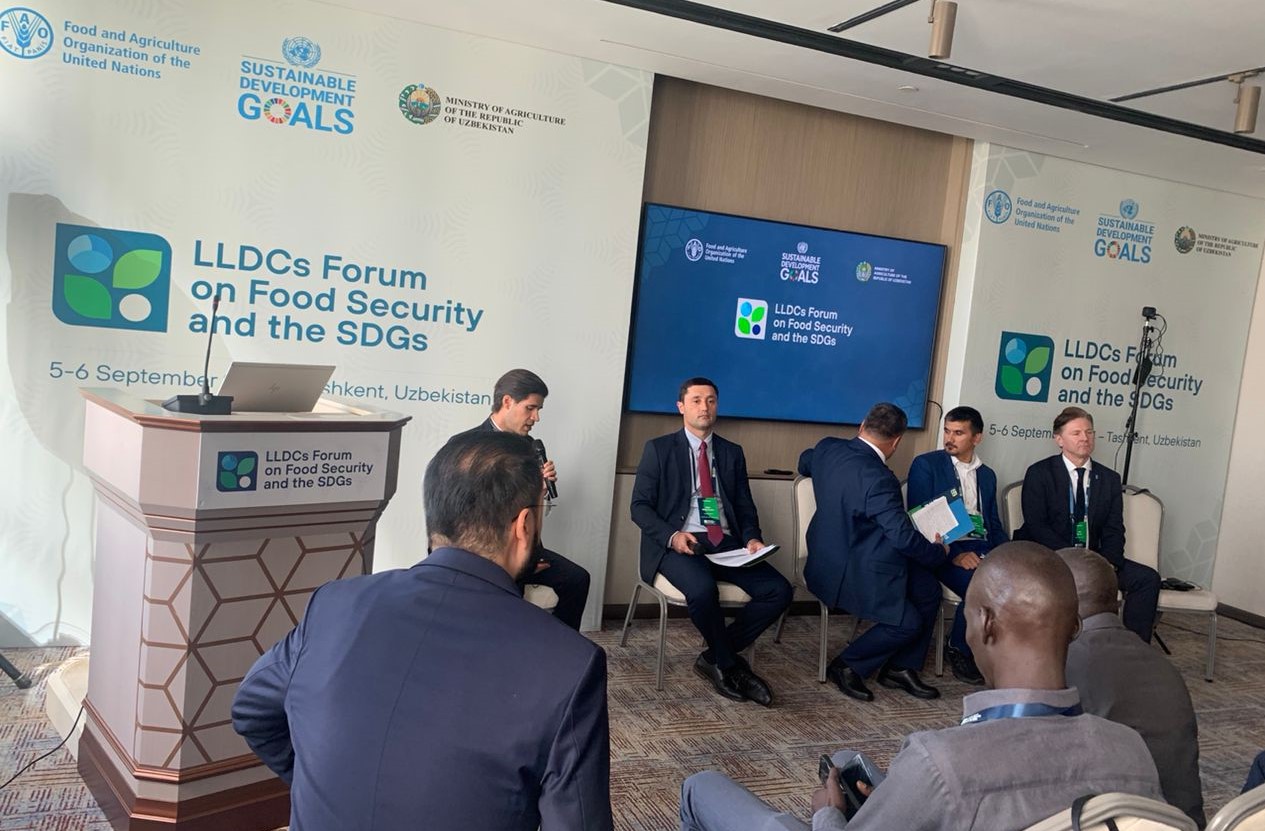“Regional cooperation is not just a strategic choice for CA, but rather it is a necessity. By working together, sharing knowledge, and mobilizing financial resources, we can transform our agrifood systems into sustainable and climate-resilient engines of growth. The initiatives of the Regional Environmental Centre for Central Asia (CAREC) prove that regional cooperation leads to tangible benefits. It is through such efforts that we can secure the future of our agriculture and the livelihoods of millions across the region,” the CAREC Executive Director, Zafar Makhmudov said at the International Forum on Landlocked Developing Countries: Food Security and the Sustainable Development Goals in Tashkent, Uzbekistan.
He underlined the interdependence of profound challenges in Central Asia, such as climate change, water scarcity, and food insecurity. According to him, all of them are interlinked and require collective action. Given the countries’ shared resources, it is clear that only by uniting the countries will be able to respond to these challenges.
Zafar Makhmudov noted, that since its establishment over 20 years ago, CAREC and other regional organizations have been instrumental in promoting regional cooperation under the support of the national partners and international donor community.
He brought as an example the Tuyamuyun Hydroelectric Complex which supplies both, water for irrigation and electricity. CAREC started introducing the Water-Energy-Food security (Nexus approach) with the support of the European Union to provide a comprehensive solution to the interconnected water, energy and agriculture challenges. Energy production and use of the dam together with irrigatory possibilities of the dam were well known. The Nexus approach allowed us to engage in a multi-sectoral dialogue, including the private sector. As the result, it was found out that the challenge in the country that owns the dam is a solution for the degrading land down the stream and financial opportunity for the private sector. A lab analysis of the composition of the silt found that at least eight lucrative products can be produced from that silt, ranging from cobalt-containing fertilizers to quite a high-quality construction brick.
“Regarding climate-resilient agriculture, CAREC has also supported various climate resilience projects aimed at making agriculture more adaptive to the harsh realities of climate change. Another example is the World Bank-supported CAMP4ASB project, which had national components in Uzbekistan and Tajikistan the regional component. Under national components enormous amount of subprojects were funded at the farmer’s and household levels to implement new climate-resilient agricultural projects. Under the regional we were organizing experience-sharing visits among the countries and even established a Climate Information Portal where all that knowledge can be stored and shared online,” said Zafar Makhmudov.
He believes that mobilizing financial resources is another important point. “Beyond technical cooperation, CAREC has played a critical role in helping CA countries in accessing climate finances, specifically, Green Climate Finance spared an additional 19 million USD to support the ongoing initiative of the WB on the CAMP4ASB project. We also know, that Largescale projects are transboundary in CA and accessing funds for such projects requires consent and agreement of all the countries the project will cover, often upper and lower-stream countries. To come to a consent and jointly apply to fund such largescale projects a platform like CAREC is needed to conduct the dialogue and prepare project concepts and proposals,” emphasized Zafar Makhmudov.
He also mentioned CAREC’s contribution to the advance of sustainable production and consumption, and resource efficiency in agricultural products with the support of another EU initiative called SWITCH-Asia.
Tashkent hosted the International Forum on Landlocked Developing Countries: Food Security and the Sustainable Development Goals on September 5-6, 2024. It convened high-level representatives of 32 landlocked developing countries, as well as representatives of international financial organizations, academia and foreign countries.

